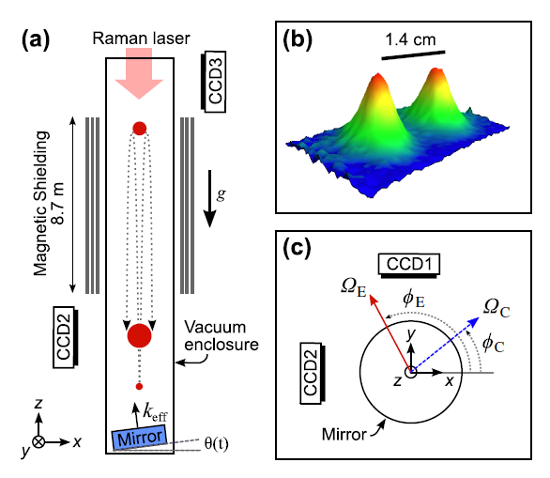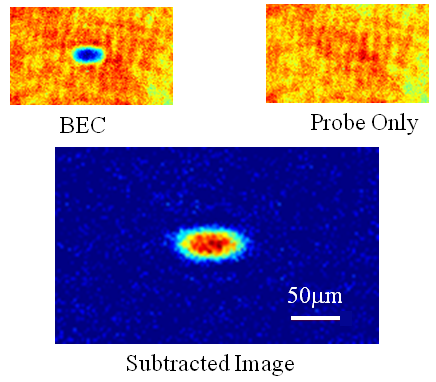When I wrote up the giant interferometer experiment at Stanford, I noted that they’ve managed to create a situation where the wavefunction of the atoms passing through their interferometer contains two peaks separated by almost a centimeter and a half. This isn’t two clouds of atoms each definitely in a particular position, mind, this is… Continue reading Spooky Action at What Distance?
Category: Physics
Laser-Cooled Atoms: Xenon
Element: Xenon (Xe) Atomic Number: 54 Mass: nine “stable” isotopes, masses from 124 to 136 amu. Xenon-136 is technically radioactive, but with a half-life of a hundred billion billion years, so, you know, it’s pretty much stable. Laser cooling wavelength: 882 nm Doppler cooling limit: 120 μK Chemical classification: Noble gas, part of column VIII… Continue reading Laser-Cooled Atoms: Xenon
How Deep Does Veritasium’s Bullet Go?
After a couple of very productive days where I closed my Twitter tab because it was too freakin’ annoying to read, I checked in briefly Wednesday morning, and found Rhett Allain and Frank Noschese discussing this Veritasium bullet-in-block experiment: Tom at Swans On Tea offers some analysis, and Rhett offers a video response doing out… Continue reading How Deep Does Veritasium’s Bullet Go?
Laser-Cooled Atoms: Helium
Element: Helium (He) Atomic Number: 2 Mass: two stable isotopes, 3 and 4 amu. Laser cooling wavelength: 1083 nm Doppler cooling limit: 38 μK (It should be noted, though, that despite the low temperature, laser-cooled helium has a relatively high velocity– that Doppler limit corresponds to an average velocity that’s just about the same as… Continue reading Laser-Cooled Atoms: Helium
Eddington, Neutrinos, and the Changing of Meaning by Context
I’m writing a bit for the book-in-progress about neutrinos– prompted by a forthcoming book by Ray Jaywardhana that I was sent for review– and in looking for material, I ran across a great quote from Arthur Stanley Eddington, the British astronomer and science popularizer best known for his eclipse observations that confirmed the bending of… Continue reading Eddington, Neutrinos, and the Changing of Meaning by Context
Point Sources and Towers: “Multiaxis Inertial Sensing with Long-Time Point Source Atom Interferometry”
A little over a year ago, I visited Mark Kasevich’s labs at Stanford, and wrote up a paper proposing to use a 10-m atom interferometer to test general relativity. Now, that sounds crazy, but I saw the actual tower when I visited, so it wasn’t complete nonsense. And this week, they have a new paper… Continue reading Point Sources and Towers: “Multiaxis Inertial Sensing with Long-Time Point Source Atom Interferometry”
Laser-Cooled Atoms: Rubidium
Element: Rubidium (Rb) Atomic Number: 37 Mass: two “stable” isotopes, 85 and 87 amu (rubidium-87 is technically radioactive, but it’s half-life is 48 billion years, so it might as well be stable for atomic physics purposes. Laser cooling wavelength: 780 nm Doppler cooling limit: 140 μK Chemical classification: Alkali metal, column I of the periodic… Continue reading Laser-Cooled Atoms: Rubidium
Laser-Cooled Atoms: Sodium
Element: Sodium (Na) Atomic Number: 11 Mass: one stable isotope, 23 amu Laser cooling wavelength: 589 nm Doppler cooling limit: 240 μK Chemical classification: Alkali metal, column I of the periodic table. Like the majority of elements, it’s a greyish metal at room temperature. Like the other alkalis, it’s highly reactive, and bursts into flame… Continue reading Laser-Cooled Atoms: Sodium
Know Your Laser-Cooled Atoms
At the tail end of the cold-atom toolbox series, I joked about doing a “trading card” version shortening the posts to a more web-friendly length. In idly thinking about this, though, it occurred to me that if one were going to have cold-atom trading cards, it might make more sense to have them for the… Continue reading Know Your Laser-Cooled Atoms
Tools of the Cold-Atom Trade: Atom Detection and Imaging
This is probably the last trip into the cold atom toolbox, unless I think of something else while I’m writing it. But don’t make the mistake of assuming it’s an afterthought– far from it. In some ways, today’s topic is the most important, because it covers the ways that we study the atoms once we… Continue reading Tools of the Cold-Atom Trade: Atom Detection and Imaging







